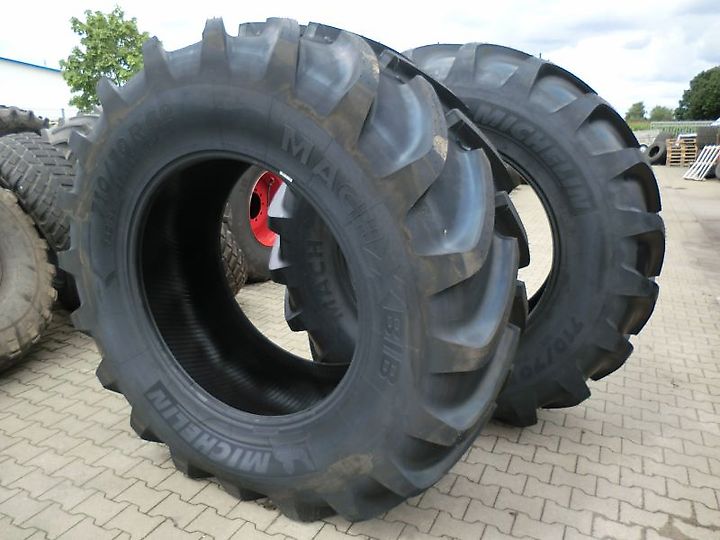Riepas lietota
Iegādājieties traktorpool.lv lietotus Riepas par labākajām cenām no tehnikas tirgotājiem vai privātiem pārdevējiem. Pievilcīgi kvalitatīvas lauksaimniecības tehnikas piedāvājumi jūsu reģionā.
 Trelleborg
186
BKT
126
Trelleborg
186
BKT
126
 Mitas
113
Alliance
102
Continental
99
Mitas
113
Alliance
102
Continental
99
 Vredestein
55
Firestone
37
Kleber
35
Rosava
35
Nokian
23
Fendt
22
Vredestein
55
Firestone
37
Kleber
35
Rosava
35
Nokian
23
Fendt
22
 Goodyear
22
Goodyear
22
 Pirelli
21
Taurus
14
Dneproshina
13
Bohnenkamp
11
Pirelli
21
Taurus
14
Dneproshina
13
Bohnenkamp
11
 Bridgestone
11
Claas
10
Bridgestone
11
Claas
10
 Massey Ferguson
10
Massey Ferguson
10
 Good Year
9
Titan
9
John Deere
8
Good Year
9
Titan
9
John Deere
8
 GKN
6
Valtra
6
GKN
6
Valtra
6
 Grasdorf
6
Dunlop
5
Grasdorf
6
Dunlop
5
 Galaxy
5
Petlas
4
Amazone
3
Galaxy
5
Petlas
4
Amazone
3
 New Holland
3
New Holland
3
 Barum
3
Barum
3
 Fortschritt
3
Kubota
3
Fortschritt
3
Kubota
3
 Pöttinger
2
Pöttinger
2
 Vogel & Noot
2
Vogel & Noot
2
 Case IH
2
Case IH
2
 JCB
2
JCB
2
 Danubiana
2
Alltura
2
Danubiana
2
Alltura
2
 Horsch
1
Horsch
1
 Kotte
1
Rabe
1
Kotte
1
Rabe
1
 AP
1
Fulda
1
Fliegl
1
AP
1
Fulda
1
Fliegl
1
 Kramer
1
Kramer
1
 Belarus
1
Belarus
1
 Kock & Sohn
1
Kock & Sohn
1
 Kioti
1
Gardena
1
Giant
1
Kioti
1
Gardena
1
Giant
1
 Unimog
1
Branson
1
Unimog
1
Branson
1
 Voltyre
1
Wifo
1
Avon
1
Pewak
1
mulag
1
Voltyre
1
Wifo
1
Avon
1
Pewak
1
mulag
1

Michelin 460/70R24 XMCL
Izmērs:

Kleber 300/95R46
Izmērs:
Michelin Agribib
Ražošanas gads: 2015, disku diametrs: 38.00 Collas, Pieejamais skaits: 2 Gab., Radiālās vai diagonālās: Radiāls, Konstrukcijas veids: standarta riepas, Izmērs: , Profila tips: AS, Ātruma indekss: 128A8

John Deere JohnDeere

Taurus RC 95 Soilsaver
Ražošanas gads: 2010, disku diametrs: 32.00 Collas, Pieejamais skaits: 2 Gab., Radiālās vai diagonālās: Radiāls, Konstrukcijas veids: standarta riepas, Izmērs: , Riepu izmērs: 270/95R32, Profila tips: AS

verschiedene aus Umbereifungen
Pieejamais skaits: 2 Gab., Radiālās vai diagonālās: Radiāls, Konstrukcijas veids: standarta riepas

Pirelli TM 800
Pieejamais skaits: 2 Gab., Radiālās vai diagonālās: Radiāls, Konstrukcijas veids: standarta riepas, Izmērs:

Kleber Super 100
disku diametrs: 38.00 Collas, Pieejamais skaits: 2 Gab., Radiālās vai diagonālās: Radiāls, Konstrukcijas veids: standarta riepas, Izmērs: , Ātruma indekss: 153A8

Goodyear John Deere 8000
Ražošanas gads: 2011, Pieejamais skaits: 4 Gab., Riepu izmērs: 73x44 R32, 700/50 R30,5

Diverse banden, wielen, velgen en dubbellucht wielen

unbekannt
Riepu izmērs: 14.00-24
Sonstige Pflegeräder, Gitterräder, Zwillingskupplungen
Tyres
Used tyres.



